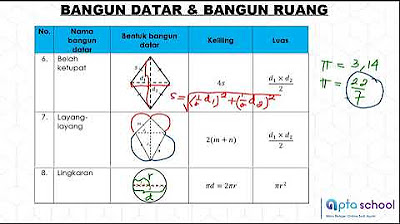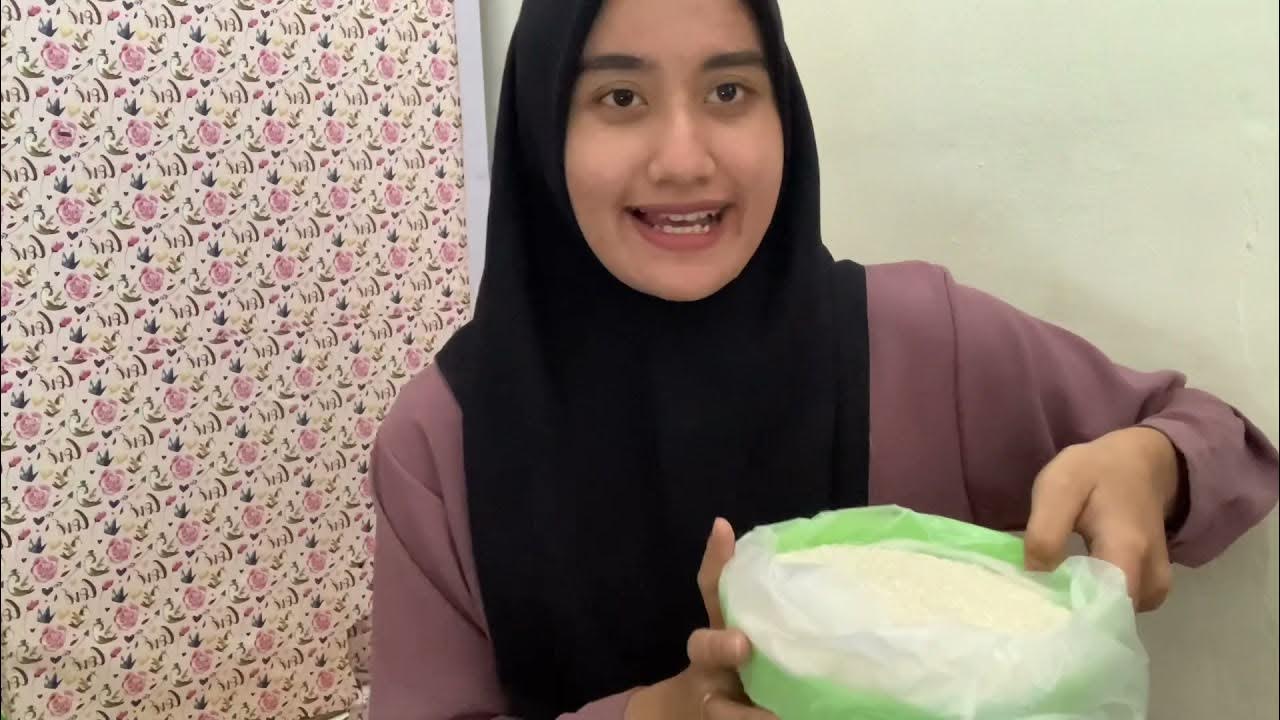Matematika Kelas 9: Bangun Ruang Sisi Lengkung (Tabung, Kerucut, Bola)
Summary
TLDRIn this educational video, the presenter explains key concepts of geometry for 9th-grade students, focusing on three-dimensional shapes: cylinders, cones, and spheres. The video covers surface area and volume formulas for each shape, offering clear, step-by-step examples for better understanding. It also demonstrates how to apply mathematical formulas to real-world scenarios, providing practical exercises for students to practice. With a friendly, engaging tone, the video is designed to help learners grasp essential geometric concepts and build confidence in solving related problems.
Takeaways
- 😀 The script discusses the surface area and volume formulas for different three-dimensional shapes, focusing on cylinders, cones, and spheres.
- 😀 The first shape covered is the cylinder, which consists of two circles (top and bottom) and one rectangular shape (the lateral surface).
- 😀 The surface area of a cylinder is calculated using the formula: LP = 2πr(r + h). The example demonstrates this formula with a cylinder having a radius of 7 cm and a height of 10 cm.
- 😀 The volume of a cylinder is given by the formula: V = πr²h, with an example using a cylinder with a radius of 7 cm and a height of 10 cm.
- 😀 The script also explains the concept of the cone, including its components: a circle as the base, a sector as the lateral surface, and a point as the apex.
- 😀 The surface area of a cone is calculated using the formula: LP = πr(r + s), where 'r' is the radius and 's' is the slant height.
- 😀 An example demonstrates the surface area calculation for a cone with a radius of 3 cm and a height of 4 cm, where the slant height is first determined using the Pythagorean theorem.
- 😀 The volume of a cone is calculated using the formula: V = (1/3)πr²h, with an example using a cone with a radius of 3 cm and a height of 10 cm.
- 😀 The surface area of a sphere is calculated using the formula: LP = 4πr², with an example using a sphere with a radius of 10 cm.
- 😀 The volume of a sphere is calculated using the formula: V = (4/3)πr³, with an example using a sphere with a radius of 30 cm.
- 😀 The script emphasizes the importance of precision when performing calculations, especially when dealing with large numbers in volume formulas.
Q & A
What is the formula for the surface area of a cylinder?
-The formula for the surface area (Luas Permukaan, LP) of a cylinder is LP = 2πr(r + t), where r is the radius and t is the height.
How do you calculate the volume of a cylinder?
-The formula for the volume (V) of a cylinder is V = πr²t, where r is the radius and t is the height.
What are the components of a cylinder as explained in the script?
-A cylinder consists of two circles (for the base and top) and a rectangle (as the lateral surface or 'side').
In the example given, what are the surface area and volume of a cylinder with a radius of 7 cm and height of 10 cm?
-For a cylinder with a radius of 7 cm and height of 10 cm, the surface area is 748 cm², and the volume is 1540 cm³.
What is the formula for the surface area of a cone?
-The formula for the surface area (Luas Permukaan, LP) of a cone is LP = πr(r + s), where r is the radius and s is the slant height.
How do you calculate the volume of a cone?
-The formula for the volume (V) of a cone is V = 1/3 πr²t, where r is the radius and t is the height.
What is the slant height in the context of a cone, and how do you calculate it?
-The slant height (s) of a cone is the distance from the base to the apex along the side. It can be calculated using the Pythagorean theorem, where s = √(r² + t²), with r as the radius and t as the height.
In the cone example, what are the surface area and volume of a cone with a radius of 3 cm and height of 10 cm?
-For a cone with a radius of 3 cm and height of 10 cm, the surface area is 75.36 cm², and the volume is 94.2 cm³.
What is the formula for the surface area of a sphere?
-The formula for the surface area (Luas Permukaan, LP) of a sphere is LP = 4πr², where r is the radius.
How do you calculate the volume of a sphere?
-The formula for the volume (V) of a sphere is V = 4/3πr³, where r is the radius.
In the example for the sphere, what is the volume of a sphere with a radius of 30 cm?
-For a sphere with a radius of 30 cm, the volume is 113,040 cm³.
What is the general approach to solving geometry problems involving these 3D shapes?
-The general approach involves identifying the appropriate formula for the surface area or volume, plugging in the given values for the radius, height, or other relevant dimensions, and carefully calculating the result.
Outlines

This section is available to paid users only. Please upgrade to access this part.
Upgrade NowMindmap

This section is available to paid users only. Please upgrade to access this part.
Upgrade NowKeywords

This section is available to paid users only. Please upgrade to access this part.
Upgrade NowHighlights

This section is available to paid users only. Please upgrade to access this part.
Upgrade NowTranscripts

This section is available to paid users only. Please upgrade to access this part.
Upgrade NowBrowse More Related Video

Luas Permukaan Prisma dan Tabung Hal 213-215 Bab 6 Kelas 7 Kurikulum Merdeka

MATERI BANGUN DATAR DAN RUANG

3D Geometry | Equation of Plane & Angle Between Plane | By Gajendra Purohit

VOLUME OF SOLID FIGURES | GRADE 6

Bangun Ruang | Matematika SD

Pembuktian Luas Permukaan dan Volume Bangun Ruang Sisi Lengkung
5.0 / 5 (0 votes)